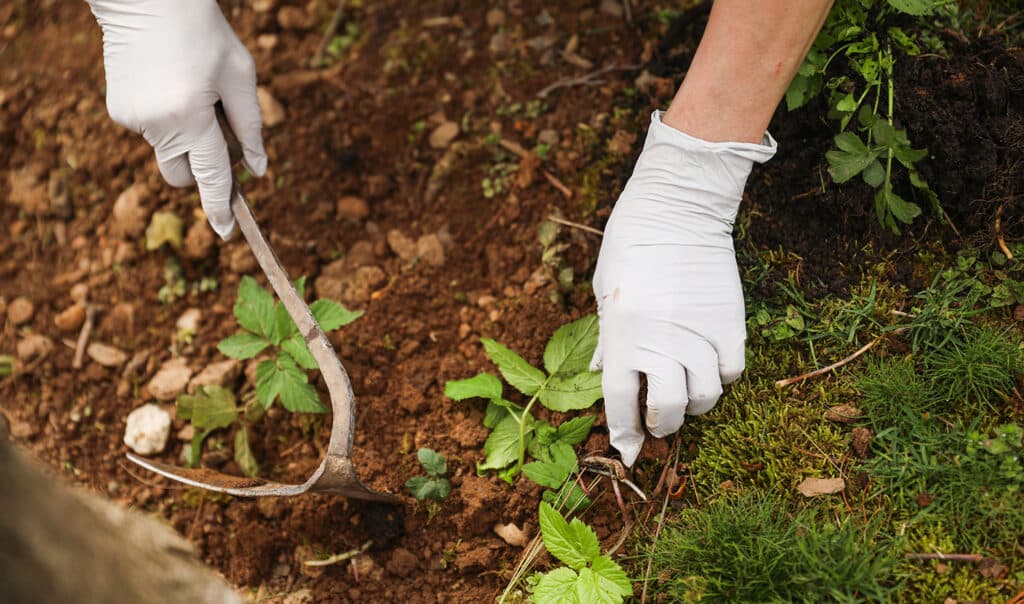Can You Kill Poison Ivy With a Spray?

Poison ivy is a dreaded plant for anyone who spends time outdoors. Its ability to cause severe itching and rashes makes it a significant concern for homeowners, hikers, and gardeners alike. While there are many methods to eliminate poison ivy, not all are safe for you or the environment. In this guide, we'll explore whether chemical sprays are the right choice, discuss the safest way to remove poison ivy, how to prepare for removal, what to avoid during the process, and how to dispose of poison ivy properly. By the end, you'll be equipped with the knowledge to tackle poison ivy confidently and responsibly.
Should You Use Chemical Sprays to Kill Poison Ivy?
Chemical sprays might seem like a convenient solution for dealing with poison ivy, but they come with considerable risks. Many of these sprays contain harmful chemicals such as glyphosate or triclopyr, which are designed to kill tough plants like poison ivy. However, these chemicals don’t just stop at the plant—they can linger in the soil, contaminate groundwater, and harm surrounding plants, wildlife, and even your family.
Given these risks, it's important to weigh the convenience of chemical sprays against the potential harm they can cause. While they might kill the poison ivy, the environmental and health costs are significant. For those who prioritize their health and the environment, it's worth considering safer alternatives. That’s where manual removal comes into play—a method that, while requiring more effort, offers a far safer solution without the need for toxic chemicals.
The Safest Way to Remove Poison Ivy
Manual removal of poison ivy is the most reliable and environmentally friendly method available. This approach allows you to remove the plant without introducing harmful substances into your environment. Here’s how to do it safely:
- Use Protective Gear: Before starting, suit up with long sleeves, pants, boots, and disposable gloves.
- Careful Extraction: To remove poison ivy, start by placing a large disposable plastic bag over the plant. Gently pull the plant out by the roots, using the bag to contain it as you go. Ensure that the roots are fully extracted, as leaving any behind could result in regrowth. Once the plant is inside the bag, seal it tightly to avoid any contact with your skin or clothing.
- Post-Removal Cleanup: After handling poison ivy, thorough cleanup is essential to prevent any lingering urushiol from causing rashes. Tecnu Original Outdoor Skin Cleanser is specifically formulated to remove urushiol from skin, clothing, tools, and even pets. This step is critical to ensuring that all traces of poison ivy are safely removed from your environment.
How to Prepare for Poison Ivy Removal
Effective preparation is key to a successful and safe poison ivy removal process. Follow these steps to ensure you’re fully prepared:
- Identify the Plant Correctly: Make sure you’re dealing with poison ivy. The plant typically has three pointed leaflets with smooth or slightly toothed edges. Misidentifying it could lead to unnecessary work or missed plants.
- Gather the Right Tools: Have all necessary tools ready before you begin, including plastic bags, disposable gloves, and protective clothing. Having everything on hand will streamline the process and reduce risks.
- Choose an Ideal Day: Aim for a dry, windless day to carry out the removal. Wet conditions can make the task more challenging, and wind can spread urushiol to unintended areas.
- Plan Your Cleanup: Keep Tecnu Original Outdoor Skin Cleanser within reach to clean your skin, clothing, and tools immediately after the removal process. This product is indispensable for preventing any post-removal irritation or rash.
What to Avoid When Removing Poison Ivy
When removing poison ivy, certain actions can exacerbate the situation or put you at risk. Here’s what to avoid:
- Never Burn Poison Ivy: Burning poison ivy releases urushiol into the air, which can cause severe respiratory issues if inhaled. Always avoid this dangerous practice.
- Avoid Touching Exposed Skin: Even if you’re wearing gloves, be mindful not to touch your face or other exposed skin while handling poison ivy. Urushiol can easily transfer from your gloves to your skin, leading to a rash.
- Don’t Compost Poison Ivy: Poison ivy should never be added to a compost pile. Urushiol can remain active in the compost and may spread to other areas of your garden, causing further problems.
- Refrain from Cutting Poison Ivy: Avoid using lawnmowers or weed whackers on poison ivy, as this can cause the urushiol to become airborne, increasing the risk of exposure.
How to Safely Dispose of Poison Ivy
Proper disposal of poison ivy is crucial to prevent re-exposure or accidental spread of urushiol. Here’s how to do it safely:
- Bagging the Plant: After carefully pulling the poison ivy plant from the ground, place it in a large plastic bag. Make sure the bag is sturdy enough to contain the plant without tearing.
- Seal the Bag: Once the plant is inside, seal the bag tightly to ensure that no part of the plant or its oils can escape. Double-bagging is recommended for extra security.
- Disposal Method: Dispose of the sealed bag in your regular trash. Do not attempt to burn the plant or add it to your compost. Check with your local waste management services if you are unsure about the disposal procedures in your area.
- Clean Up Thoroughly: After disposal, wash your hands, tools, and any clothing that may have come into contact with the plant using Tecnu Original Outdoor Skin Cleanser to remove any remaining traces of urushiol.
While chemical sprays might offer a quick fix for poison ivy, the risks they carry often outweigh the benefits. Manual removal is not only safer for your health and the environment, but it’s also highly effective when done correctly. By preparing properly, avoiding common pitfalls, safely disposing of the plant, and using Tecnu Original Outdoor Skin Cleanser for thorough post-removal cleanup, you can safely rid your property of poison ivy without the hazards associated with chemical sprays. Take the time to remove poison ivy carefully, and you’ll be able to enjoy your outdoor spaces without worry.




